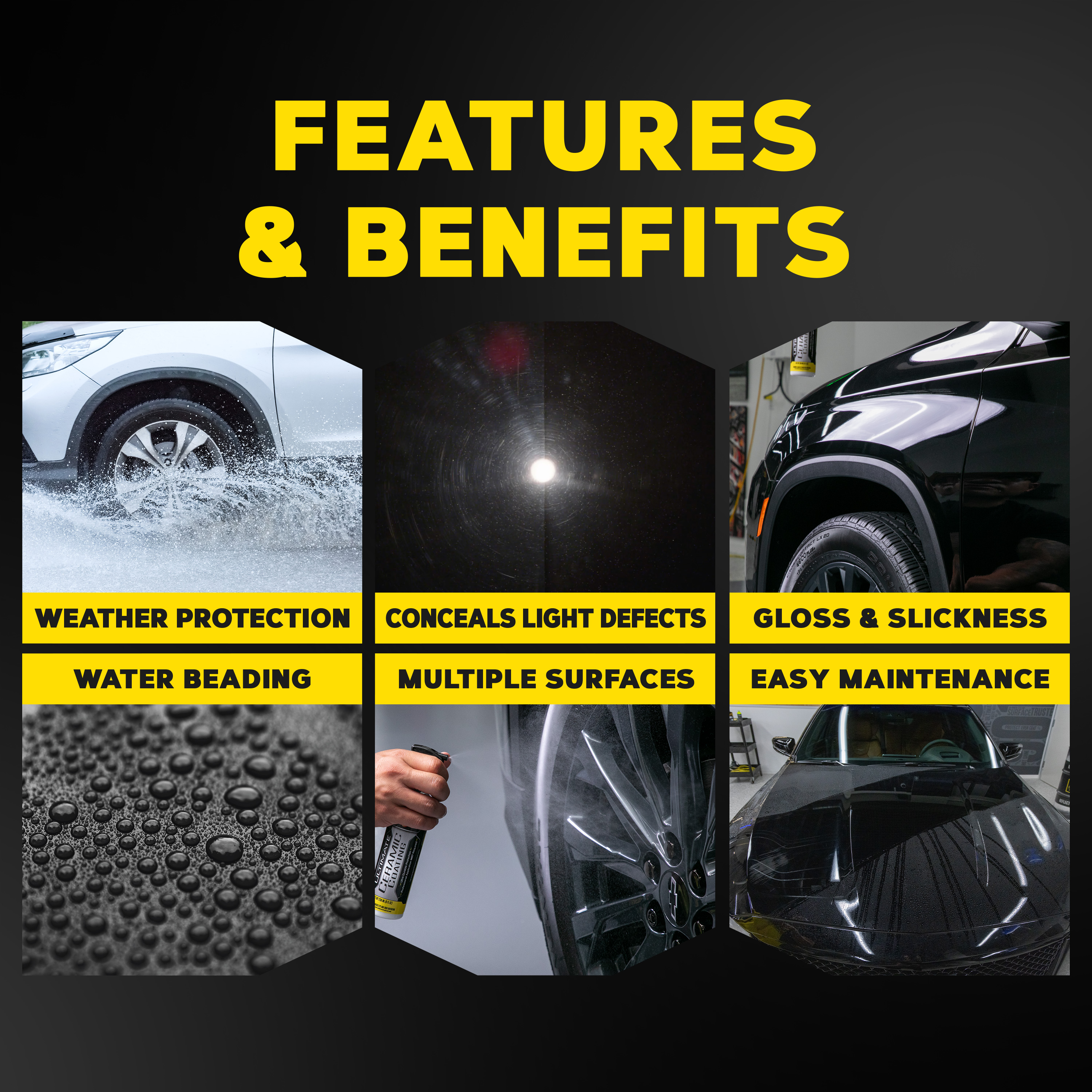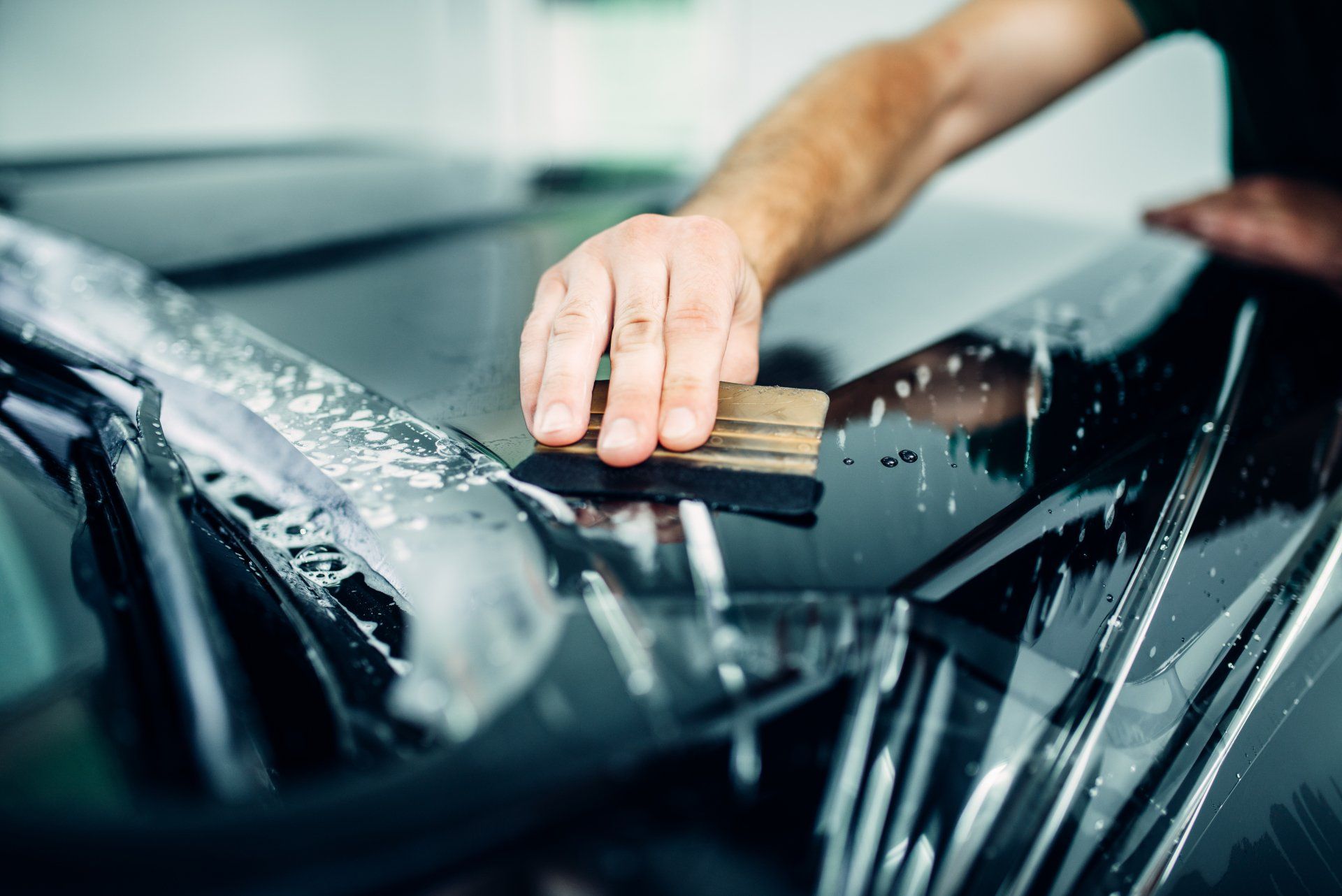Everything You Need to Know About Ceramic Coating for Cars
Everything You Need to Know About Ceramic Coating for Cars
Blog Article
Ceramic Layer vs. Typical Wax: Which Gives Better Long-Term Protection?
The dispute between ceramic layers and traditional wax for car protection has actually amassed considerable interest amongst automotive enthusiasts and professionals alike. While both satisfy of safeguarding paint, their differences in sturdiness, application, and long-lasting maintenance expenses might influence a consumer's option. Ceramic coatings boast superior longevity and resistance to environmental elements, yet the complexity of their application elevates questions about ease of access and functionality. As we explore these contrasting choices, it becomes necessary to think about not just the prompt advantages however likewise the ramifications for car care gradually.
Review of Ceramic Finishing
Ceramic covering has actually gained considerable popularity amongst vehicle enthusiasts and detailers alike as a result of its sophisticated safety high qualities. This ingenious innovation is developed to create a resilient, hydrophobic guard over a car's paint surface area, significantly enhancing its resistance to environmental pollutants such as dust, UV rays, and chemical stains. Unlike traditional wax, which supplies a temporary layer of security, ceramic finishes bond at a molecular level with the paint, supplying lasting longevity-- typically prolonging beyond 2 years with correct maintenance.
The application process entails precise prep work of the car's surface area, consisting of cleaning and brightening to make sure optimum adhesion. When used, the coating cures to form a robust layer that not only includes deepness and gloss to the paint yet also streamlines maintenance. With its hydrophobic residential or commercial properties, ceramic finish permits water and dirt to glide off even more quickly, reducing the regularity of cleans and minimizing the risk of swirl marks.
Additionally, ceramic finishes are readily available in various formulations, allowing customers to pick items customized to their particular needs and choices. On the whole, ceramic coating stands for a considerable innovation in paint defense innovation, delivering premium efficiency contrasted to standard options.
Summary of Conventional Wax
Traditionally considered as a staple in vehicle treatment, wax offers as a preferred selection for those looking for a simple approach to enhance and shield their lorry's paint - ceramic coating. Automotive wax typically comprises all-natural active ingredients, such as carnauba, or artificial compounds, made to develop a safety layer externally of the paint. This layer not only enhances the car's gloss and shine but likewise offers an obstacle against ecological pollutants
The application of wax is typically user-friendly, making it available for both experts and do it yourself lovers. It can be applied by hand or maker, permitting flexibility in the describing process. Once applied, wax needs a treating period, after which it sets to create a protective covering. Wax is additionally known for its capability to push back water, advertising a beading effect that helps in the prevention of water areas and deterioration.
Nevertheless, while wax works for boosting the aesthetic charm of a vehicle, it is very important to note that the security it uses may demand a lot more constant reapplication contrasted to alternate items, such as ceramic finishes. Overall, standard wax remains a preferred choice for those focusing on convenience of usage and instant aesthetic renovation.
Resilience and Durability Comparison
While both ceramic finishings and conventional wax offer protective benefits for auto paint, their durability and durability differ significantly. Conventional wax, usually made from all-natural carnauba or artificial polymers, generally provides a safety layer that lasts approximately 3 to 6 months. This relatively short lifespan necessitates regular reapplication to keep optimum defense.
On the other hand, ceramic finishings are engineered from sophisticated nanotechnology, developing a covalent bond with the paint surface. This leads to a robust, hydrophobic layer that can endure for 2 to five years, depending upon the item and environmental problems. The premium durability of ceramic finishings is connected to their chemical framework, which provides enhanced resistance to scrapes, UV rays, and oxidation.

Protection Versus Ecological Variables
Securing a vehicle's paint from environmental variables is essential for keeping its appearance and worth in time. Autos are regularly exposed to a range of components, including UV rays, bird droppings, tree sap, acid rain, and road crud, all of which can jeopardize the stability of the paintwork.
Ceramic coatings supply a durable protection against these ecological aggressors. Unlike standard wax, which can degrade rapidly under UV exposure, ceramic finishings create a resilient, hydrophobic layer that Continue resists the damaging results of sunlight and environmental toxins. This advanced innovation develops a chemical bond with the car's surface area, supplying superior protection that lasts for several years, even in severe conditions.
In contrast, ceramic finishings preserve their safety top qualities much longer, dramatically lowering the danger of paint damage and guaranteeing that the car maintains its aesthetic appeal. As an outcome, ceramic coverings are significantly acknowledged as the exceptional choice for lasting protection versus environmental aspects.
Application and Upkeep Differences
The methods of application and subsequent upkeep for ceramic layers and standard wax differ considerably, impacting the total user experience and efficiency of each item. Ceramic coverings call for a more complex application process, typically entailing surface area preparation that consists of washing, sanitizing, and polishing the car. As soon as the surface area is all set, the ceramic finish is used in a regulated atmosphere, frequently requiring specialist know-how to ensure proper healing and bonding to the paint.

While both products enhance car appearance, the longer-lasting defense provided by ceramic coverings may validate their first investment, in spite of the more demanding application process. Alternatively, traditional wax remains a popular choice for those seeking an easier, albeit temporary, option.

Verdict
In verdict, ceramic coatings demonstrate significant advantages over traditional wax in terms of toughness and ecological security. With a life expectancy prolonging 2 to 5 years and remarkable resistance to UV rays, dust, and chemical spots, ceramic layers offer a more effective solution for lasting automobile upkeep. Although the application process might call for expert expertise, the resulting expense financial savings and decreased frequency of reapplication emphasize the worth of ceramic finishes for those looking for optimum automobile security.
The debate in between ceramic coverings and traditional wax for lorry defense has actually garnered substantial attention amongst auto enthusiasts and specialists alike. Unlike typical wax, which gives a temporary layer of protection, ceramic coverings bond at a molecular degree with the paint, using lasting durability-- frequently prolonging past two years with appropriate upkeep.
While both ceramic finishings and traditional wax deal protective benefits for auto paint, their longevity and durability vary substantially. For automobile fanatics seeking long-lasting protection, ceramic finishes present a compelling advantage over standard wax products.
In final thought, ceramic layers demonstrate substantial advantages over typical wax in terms of longevity and environmental security.
Report this page